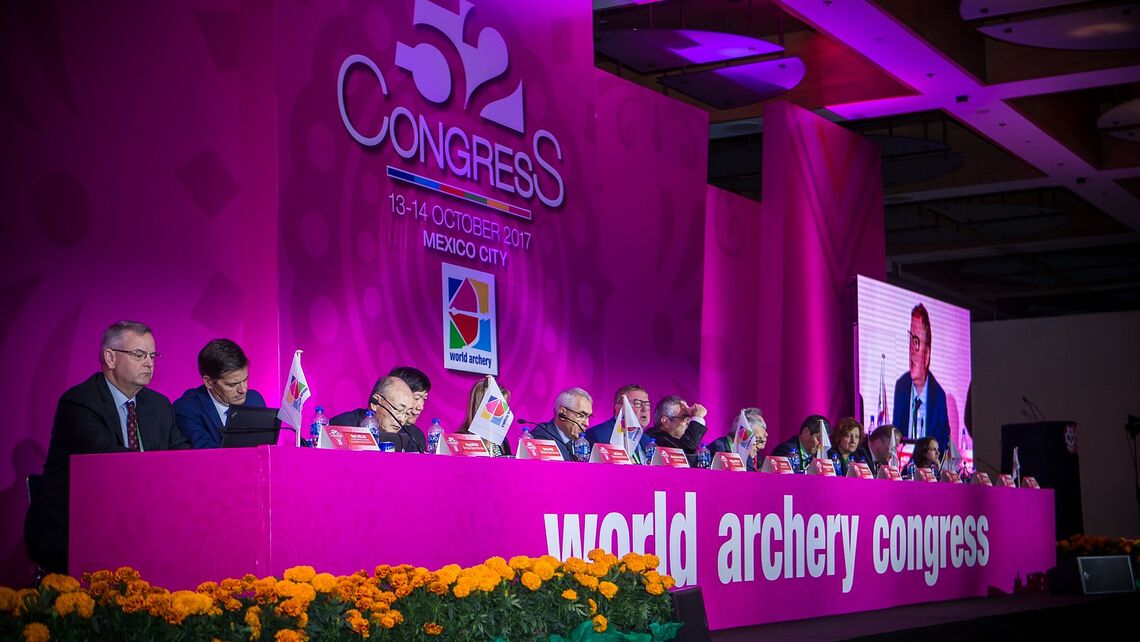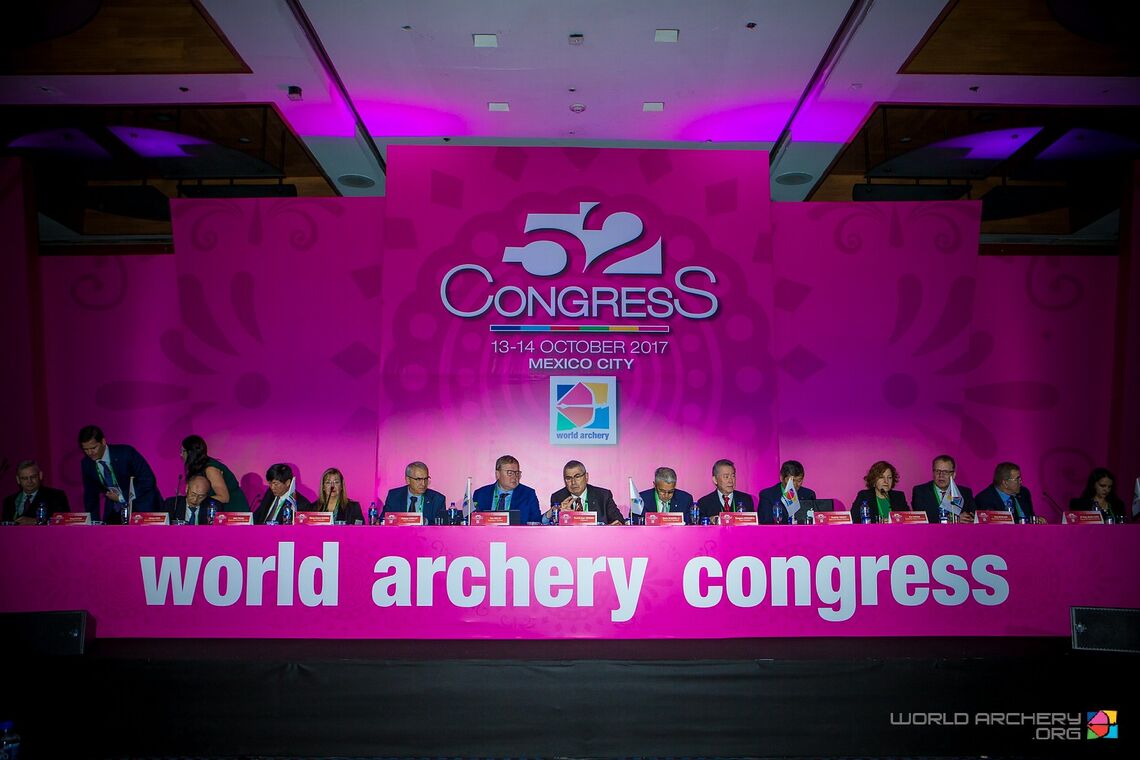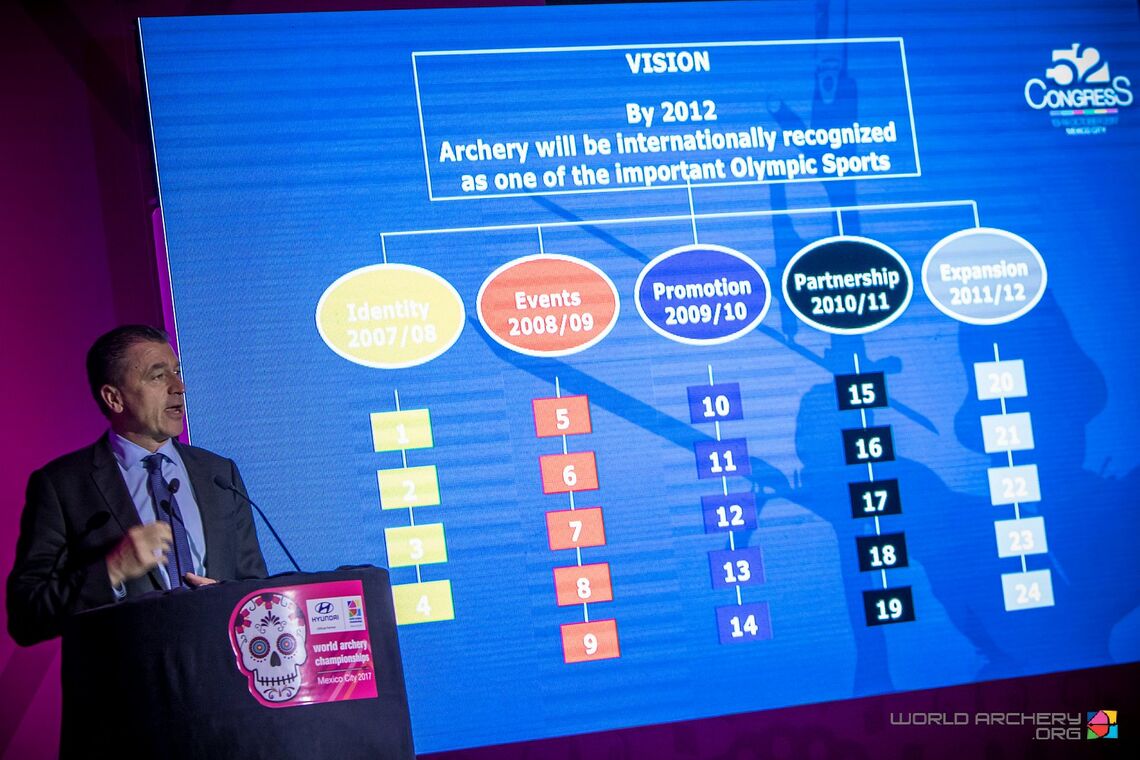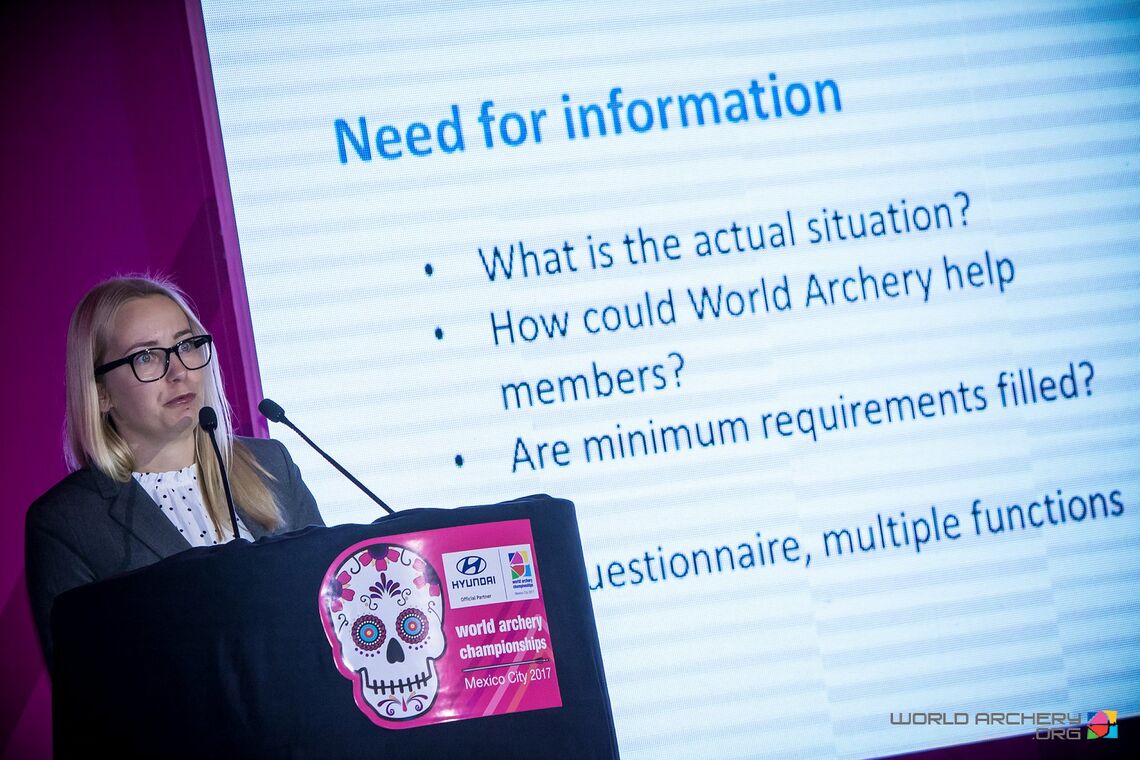Motions and members voted on at Congress 2017

The 52nd Archery Congress in Mexico City started on Friday 13 October 2017 with voting delegates or appointed proxies representing 83 countries approving a number of rule changes affecting governance issues and competition operations.
All interpretations and bylaws approved by the Executive Board in the two-year period prior to Congress 2017 were confirmed by delegates.
Motions
The following explanations are not official rulings. The rulebook will be updated over the coming months and officially released on 1 April 2018.

Motions passed
Elections for committees are to be staggered so whole committees are not up for re-election at each Congress, improving continuity and transfer of knowledge. (This comes into effect immediately.)
Motions on data protection and participation agreements, and the creation of an international license to help with cross-country insurance and identifying elite athletes were passed.
Congress passed a motion to expand the number of teams advancing to the elimination phase of a tournament from 16 to 24.
Several editorial changes were made to the rulebook, with rounds not used in world championships moved and prose rewritten for ease of use.
Motions deferred
A proposal to remove the World Archery Indoor Championships and invest more in the Indoor Archery World Cup, an open entry circuit crowing in popularity, was tabled for discussion at Congress 2019 after a proposal by Norway.
Another indoor archery proposal, to introduce a new proportional target face for compound archers, was also deferred to 2019 – following a request from the Dutch federation for further investigation and analysis of the data.
Motions rejected
The Executive Board will not be increased in size after a proposal from World Archery Oceania was rejected by the floor.

Members
Delegates accepted federations from Andorra, British Virgin Islands, Congo DRC, Djibouti, Saint Kitts and Nevis, Sierra Leone and Turkmenistan as full members.
Solomon Islands and Togo, previously members, were also re-affiliated.
Nicaragua, Palau and Bosnia-Herzegovina were excluded by Congress for non activity or non payment of fees. The exclusions follow World Archery’s principle of only maintaining active members, as confirmed at Congress in 2015 in Copenhagen.
Reports
Secretary General Tom Dielen’s report focused on prioritising products, promotion, partnerships and processes as federations were encouraged to implement high-level strategies with visions eight years in the future.
He updated members on office and organisational activities since last Congress and gave a financial overview.

Reports were also given on the operations of the new World Archery Excellence Centre after its first year of activities by Centre Director Juan Carlos Holgado, on the governance of World Archery member associations by Siret Luik, and TSE’s Lars Haue-Pedersen spoke on the progression of the World Archery Plan.
Positives from Luik’s report were the 87% of federations that said they’d progressed in development in the past four years and the 95% of federation that belong to their National Olympic Committee.
Areas of improvement included the lack of clear contact routes to some federations and gaps in firm constitutions and anti-doping rules.
Tokyo 2020 Sports Manager Yuko Okura updated delegates on preparations for the next Olympic and Paralympic Games.
The 2017 Congress runs 13/14 October and 2017 Hyundai World Archery Championships runs 15-22 October in Mexico City, Mexico.
